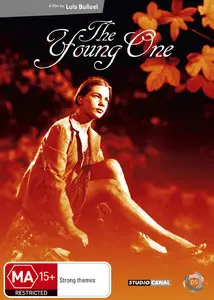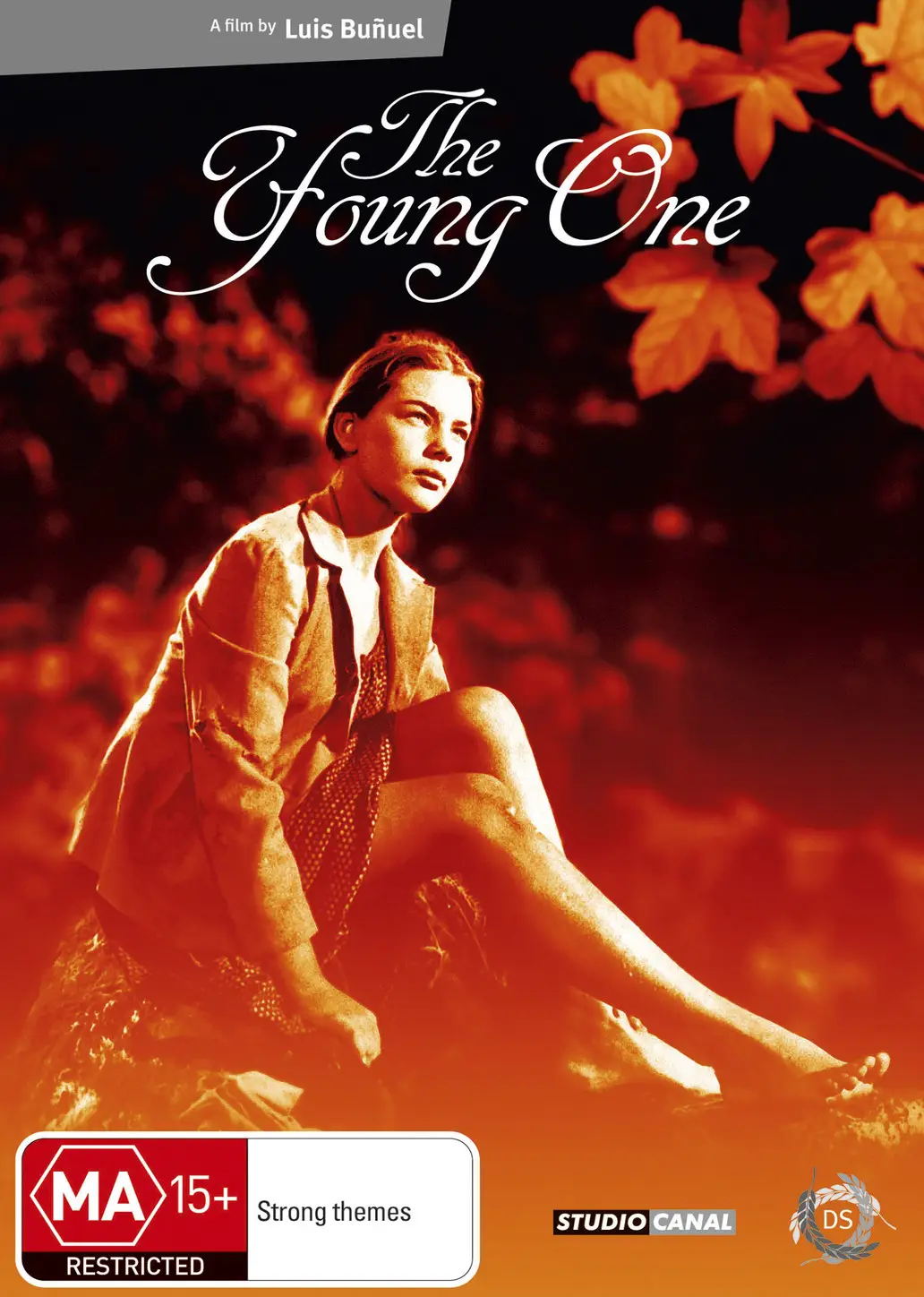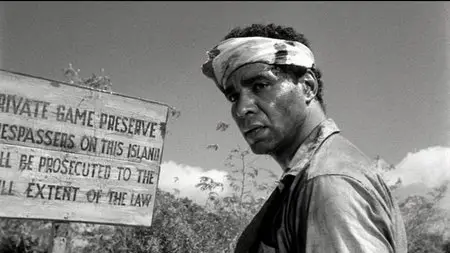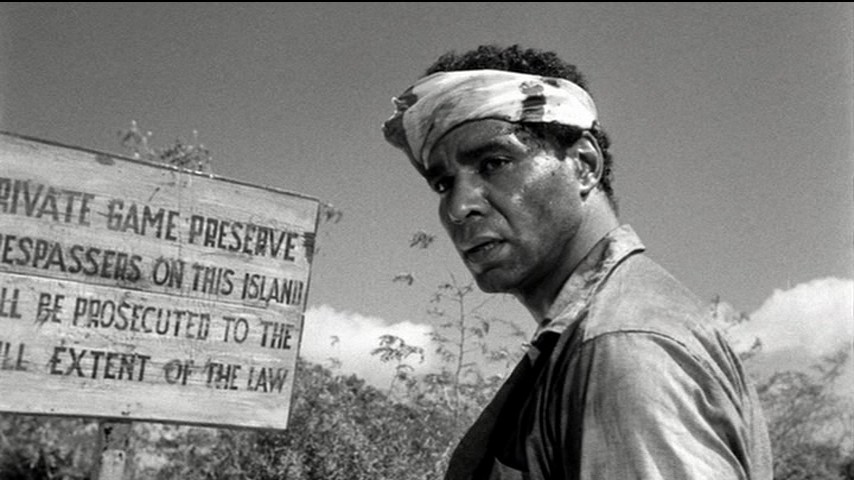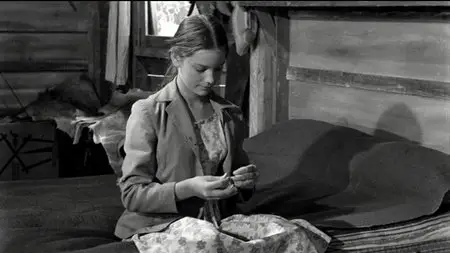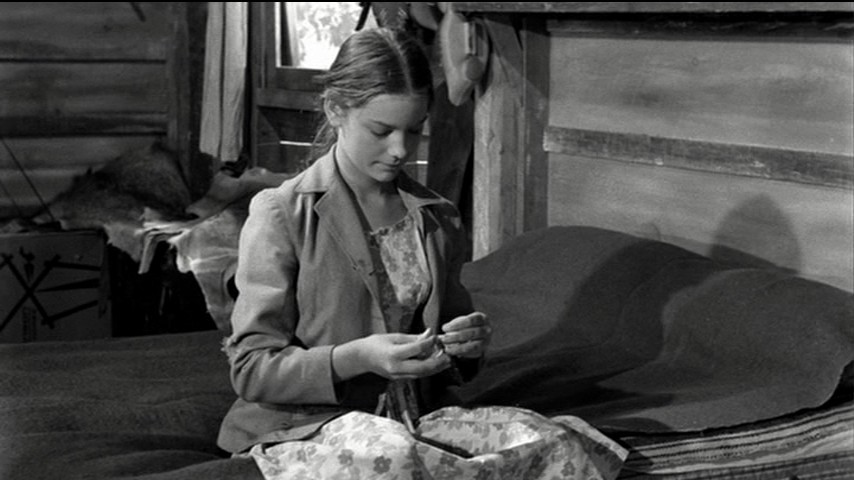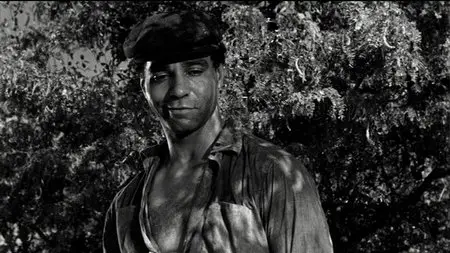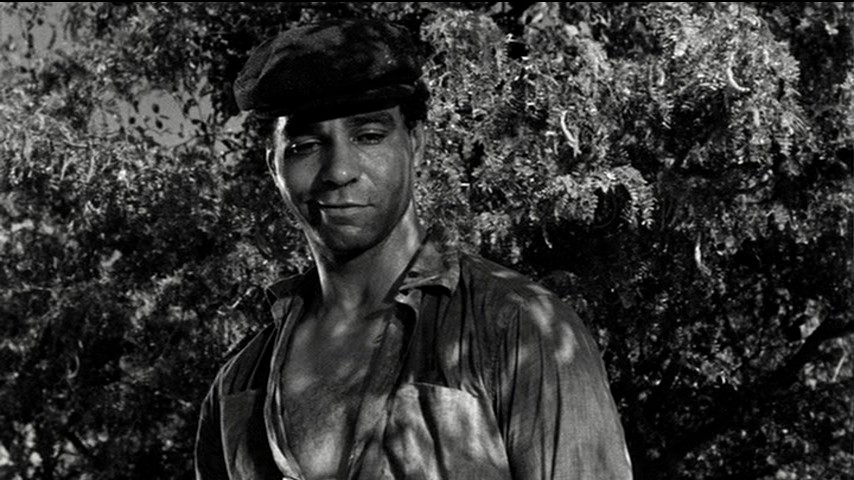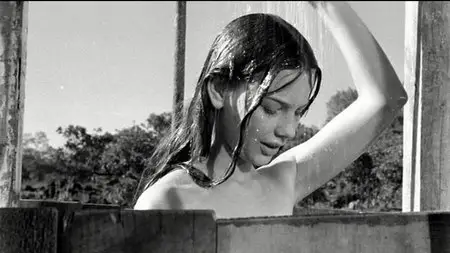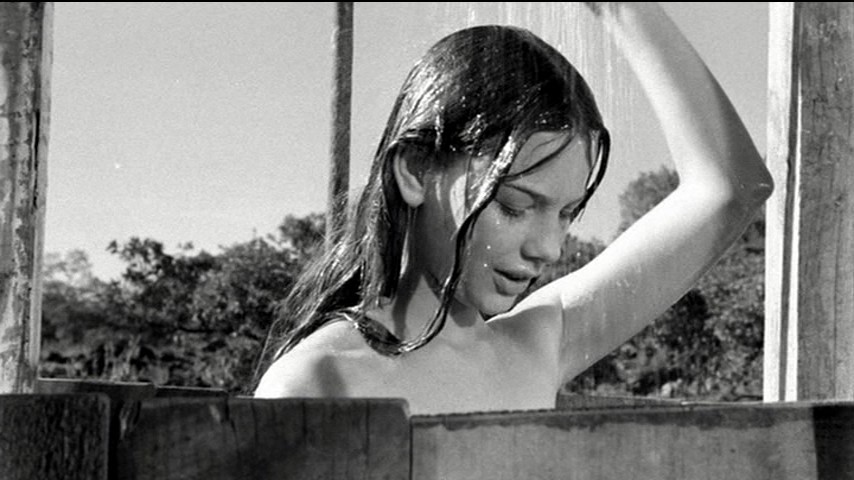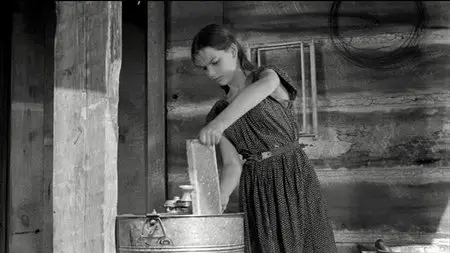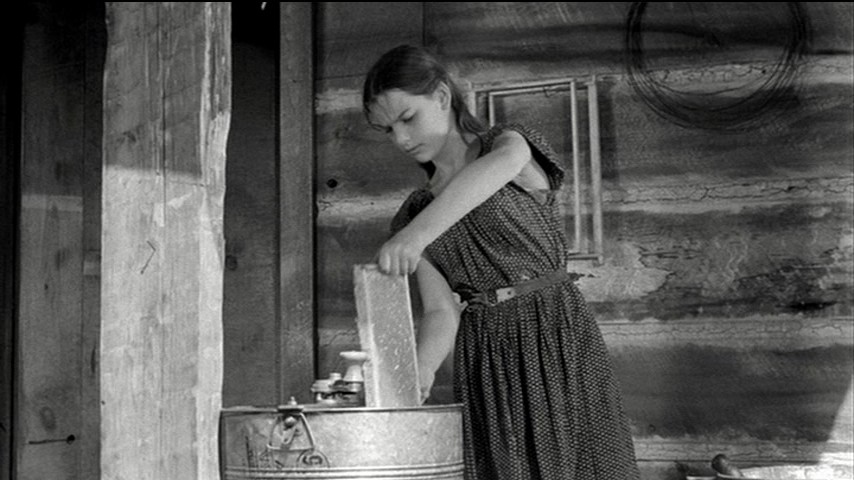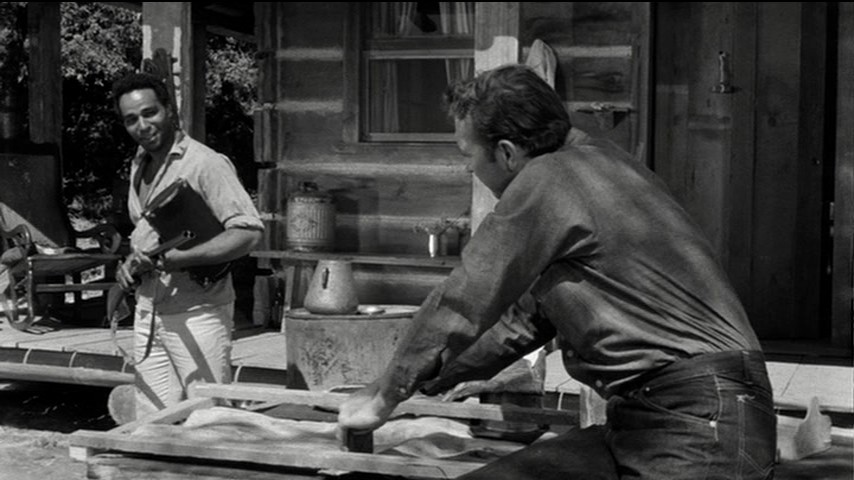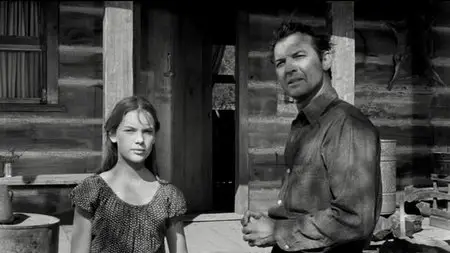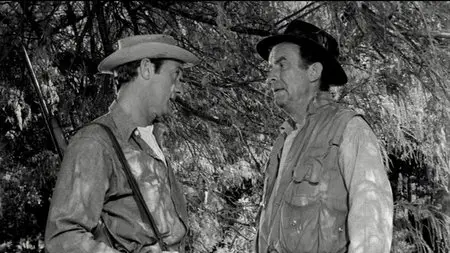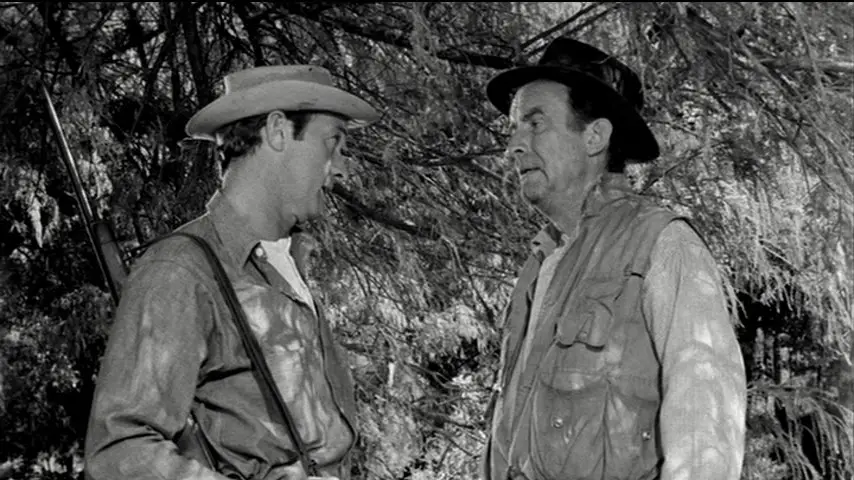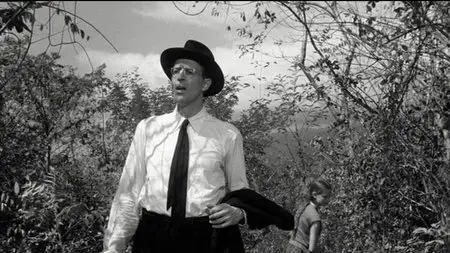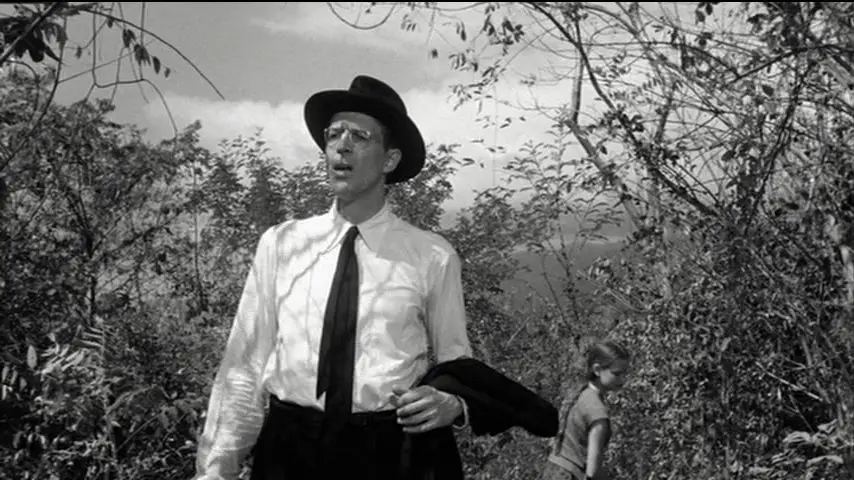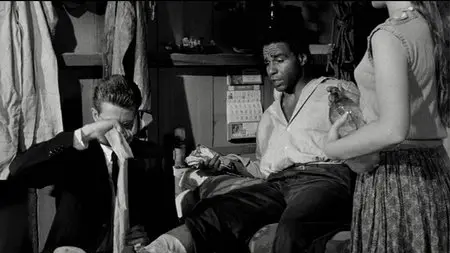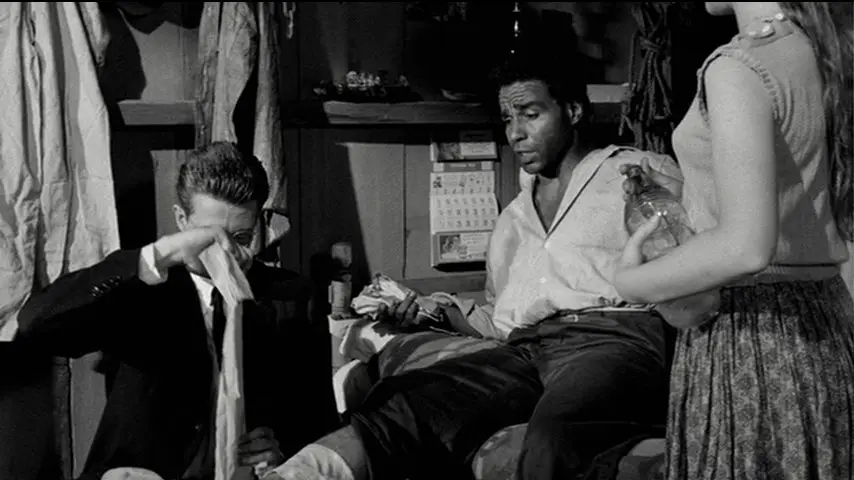The Young One (1960)
DVD5 | ISO | NTSC 16:9 | 01:35:39 | 3,95 Gb
Audio: English AC3 2.0 @ 192 Kbps | Subs: English, Spanish
Genre: Art-house, Drama
DVD5 | ISO | NTSC 16:9 | 01:35:39 | 3,95 Gb
Audio: English AC3 2.0 @ 192 Kbps | Subs: English, Spanish
Genre: Art-house, Drama
Director: Luis Buñuel
Stars: Zachary Scott, Bernie Hamilton, Key Meersman
The Young One (or White trash in the United States or Island of Shame in the United Kingdom) is one of only two films made by Luis Bunuel in English, the other being The Adventures of Robinson Crusoe made in 1952. Both films share the distinction of being Mexican productions, films made to make Bunuel known in the United States. The Young One (La Joven in Spanish) is confronting in its themes of social justice, treatment of innocent people, prejudice and racism and for this reason it failed at the US box office in 1960. American audiences just couldn't sympathise with Bunuel's social criticism of the treatment of people judged inferior, such as Bernie Hamilton's Traver who is a black man escaping a false charge or Key Meersman's Evalyn who is a 13 year-old girl left in the care of Miller, played by Zachary Scott, after Evalyn's grandfather and handyman for Miller who is a game warden on an island off the American coastline.
If you compare the reaction to Bunuel's film made in 1961, Viridiana, in Spain, with similar social criticisms against authoritative figures and judgment of inferior people in society, you could deduce that Viridiana lives on in cinematic history because it is much more visually and metaphorically confronting then The Young One. Also, audiences in Spain, and especially in France, could sympathise with the criticisms made in Viridiana. In The Young One, each main character is presented with flaws and virtues, Bunuel seems to be judging the situation these characters find themselves in, not the characters themselves and frankly American audiences in 1960 would not have been able to empathise with this scenario.
Jonathan Rosenbaum writes an interesting essay on why this film is a neglected masterpiece in the 16 page booklet included with the DVD. Luis Bunuel was not a recognised auteur at this stage in his career, did that have something to do with it? I would reply by asking what about Los Olvidados? The Young One is not a trademark Bunuel film replete with surrealist metaphoric undertones, so don't view this film thinking that is has been made in that style. Instead, it is a clever criticism of late 1950s/early 1960s American society that deserves to be looked at afresh on its own merits.
IMDB
DVDBeaver
Wikipedia
Zachary Scott and Bernie Hamilton star as deadly adversaries on an island hell in Luis Bunuel's THE YOUNG ONE, a rarely shown English-language gem about racism and pedophilia. For years it was one of Bunuel's most elusive films, because of which its critical reputation suffered, but after being rescued from oblivion in the early '90s and released on video in a sparkling new print, it can now take its rightful place next to the director's other masterworks.
Unjustly accused of raping a white woman, a black jazz musician named Traver (Bernie Hamilton) flees from a Southern lynch mob, but his boat runs out of gas at a tiny nearby island that's the private game preserve of a group of wealthy hunters. The island's sole inhabitants are the racist game warden Miller (Zachary Scott), and Evalyn (Kate Meersman), a beautiful young girl in her early teens whose handyman grandfather has just died and who's subsequently seduced by Miller. When Traver arrives, he befriends Evalyn while Miller is in town for the day, and gives her some money for food and one of Miller's shotguns. When Miller returns and learns about Traver, he hunts Traver down and shoots holes in his boat, but because Traver is armed, they call a stalemate. After Miller threatens Traver with some grenades he's kept as war souvenirs, Traver turns in his rifle and is forced to work for Miller.
Soon after, Reverend Fleetwood (Claudio Brook) and a violent redneck boatman Jackson (Graham Denton) arrive to take Evalyn to a welfare home, and after learning that Traver is there, inform Miller about the rape charge. While trying to escape, Traver injures his leg in an animal trap, but is rescued by Fleetwood, who becomes convinced of his innocence owing to the dubious character of the woman who accused him. Miller and Jackson then capture Traver and tie him up, but Evalyn cuts his ropes and Traver beats up Jackson. Meanwhile, Evalyn inadvertently informs Fleetwood about Miller seducing her, and after Miller tells Fleetwood he wants to marry Evalyn, Fleetwood promises not to report him if he lets Traver go. Miller helps Traver repair his boat and allows him to leave, and Fleetwood and Jackson take Evalyn back to the mainland, leaving Miller alone on the island.
Filmed in Mexico with an American producer and an all-American cast (except for Claudio Brook as the Reverend), THE YOUNG ONE is Bunuel's only exclusively English-language film (his ADVENTURES OF ROBINSON CRUSOE was a Mexico-US coproduction made in both Spanish and English versions). Generally considered to be a minor film in the director's oeuvre, it's one which he himself has called one of "my most personal" films, and it certainly contains several classic Bunuelian details, including sexual symbolism (Traver plays a clarinet which Evalyn calls a "licorice stick"); foot fetishism (Evalyn putting boots on her grandfather's cadaver, close-ups of her feet in the shower and Miller squeezing her bare fleshy legs to determine how old she is); and an obsession with insects and the savagery of nature (Evalyn crushing a spider with her shoe, the documentary-like scenes of her extracting honey from the beehives, a badger ripping apart hens and sucking out their blood as Miller seduces Evalyn).
Although the story deals explicitly with racism, this is not a Stanley Kramer-ish "thesis" film filled with heavy-handed messages and stereotypical depictions of devilish whites and saintly blacks. With his customary subtlety and impartiality, Bunuel gets to the roots of racism as the result of fear, ignorance, and the desire for power (as in the crosscutting between Miller shooting and skinning a rabbit as Traver flees the lynch mob) while portraying all of his characters as neither all good nor or all bad (Traver himself is definitely no saint, and the idealistic, but hypocritical Reverend flips his mattress after learning that Traver slept on it). The characters are allowed to defend themselves and explain their motivations: Miller is racist because of his education and upbringing, but doesn't even know why he hates "niggers," whereas the violent Jackson thinks of blacks as animals and says he feels sorry for them "because God left something out of you–your souls."
The film is much more than just a study of prejudice, however, suggesting that the primordial nature of man is reflective of the cruelty of nature itself, with Gabriel Figueroa's superb high-contrast photography highlighting the primitive aspects of the island (the shimmering sea, the blazing sun, the jagged rock formations, and the lushly fetid foliage). It's the portrait of the perverse sexual relationship between Miller and the child-like Evalyn, however, which makes the film one of Bunuel's most fascinating. Kay Meersman (who's a dead ringer for an earlier Liv Tyler) was a nonprofessional actress who only appeared in one other film besides this, and was reportedly a nightmare for Bunuel to direct, but she exudes an animalistic sensuality and guileless innocence that seems completely natural. The scene where Miller seduces Evalyn, and shots of her playing on a swing or traipsing around in the new dress and high heels he's bought her, possess a darkly comic and evil eroticism which indicates that Bunuel was the only filmmaker who could have done justice to Nabakov's Lolita.Michael Scheinfeld, TV Guide
Poets have said that eyes are the windows to the soul, but Luis Buñuel believed that our legs and feet revealed more about us than any other parts of our bodies. In the 1960 Cannes darling The Young One, only one of two English-language films Buñuel ever made, the director's fractured obsession with legs and feet may seem excessive (even by his typically fetishistic standards), but this irrational focus reflects the horror and absurdity of the complex issues of race and sex around which the film pivots. Visually, the little-seen The Young One is Buñuel's most expressive film—it's setting may be Spartan but its look is scarcely unceremonious. Framed by a monophonic rendition of "Sinner Man" by Leon Bibb, the film has the scorching emotional urgency of a black spiritual.
Traver (Bernie Hamilton), an African-American musician, escapes to an insular Carolina island hunting preserve after he's accused of raping a white woman. There he discovers Evalyn (Key Meersman), a naïve and unmolded 13-year-old girl who's never seen a television and who has no idea what a "licorice stick" might refer to other than Traver's clarinet. Evalyn lives with the racist Miller (Zachary Scott), who takes to diddling the young girl now that her mixed-blood grandfather has passed. Salacious enough to make Elia Kazan's Baby Doll and Luis Malle's Pretty Baby blush, The Young One shouldn't be mistaken for a trivial provocation. Buñuel intriguingly conflates Miller's systematic abuse of Evalyn with the spectacle of the racist man's psychosexual contempt for Traver.
Miller is given many an opportunity to kill his prey but passes nearly every time; he is at once torn by whatever guilt he feels over having sex with Evalyn and the affections the young girl has for Traver, who, unlike the saints played by Sidney Potier in countless films, has no problem talking back to his tormenters. In the many thrilling ups and downs of this twisted, racially-charged update of The Most Dangerous Game, the roles of hunter and huntee constantly reverse, with guns perpetually swapping hands and Traver returning to Miller's house for one reason or another (his boat is repeatedly shot with holes and, later, his foot gets caught in an animal trap). In the constant frustration of Traver's escape and Miller's inability to play nice with him, Buñuel evokes the face of humanity repeatedly peeking out from and retreating into the steely shell of a racist comfort zone.
To this already unnerving gumbo of feelings and ideas, the director adds a white supremacist hellbent on lynching Traver and a priest whose compassion has limits: he makes a case for Traver's innocence but has Evalyn turn a mattress over so he won't have to sleep on the same side Trever did the night before. Caught in the crossfire of Traver's indignation and Miller's contempt, Evalyn is the obscure object through which Buñuel himself enters the story. Not a single frame is wasted in The Young One and every image conveys the forcible weight of its maker's appalled moral and social viewpoint, from Evalyn's legs peeking out from beneath a makeshift shower to a raccoon terrifying a group of chickens. Like the best films of Buñuel's career, The Young One connects to us on a blood level but the incision it makes to reach us there is made with flabbergasting sensitivity.
Special Features:
- Commentary by Peter Evans and Isabel Santaolalla
Many Thanks to Original uploader.
No More Mirrors.


